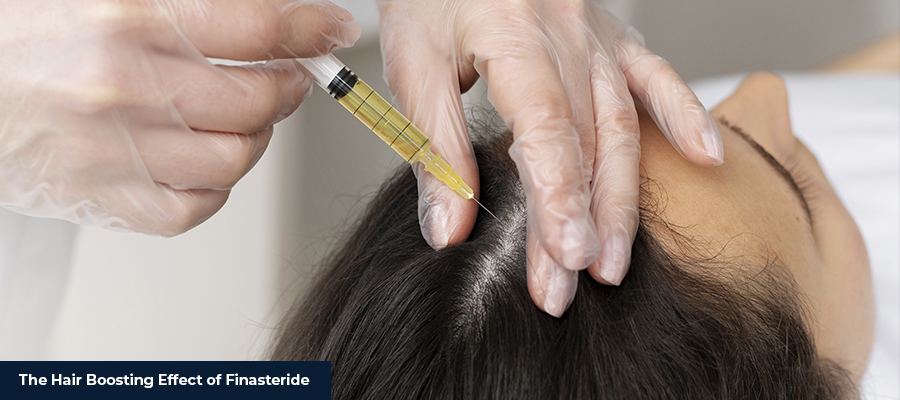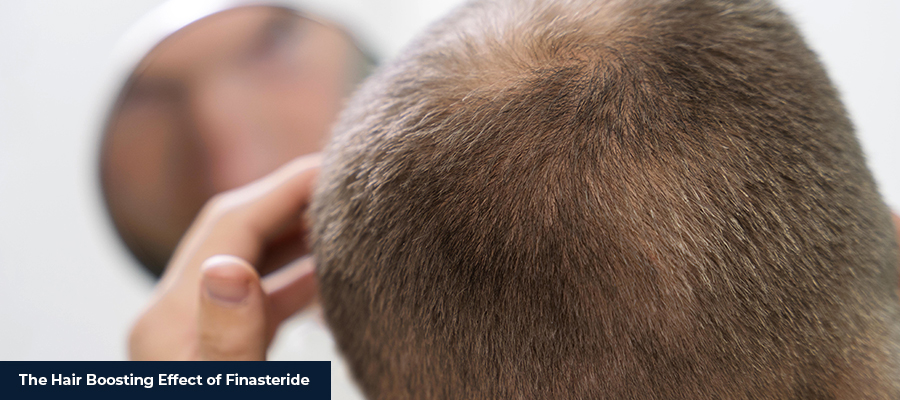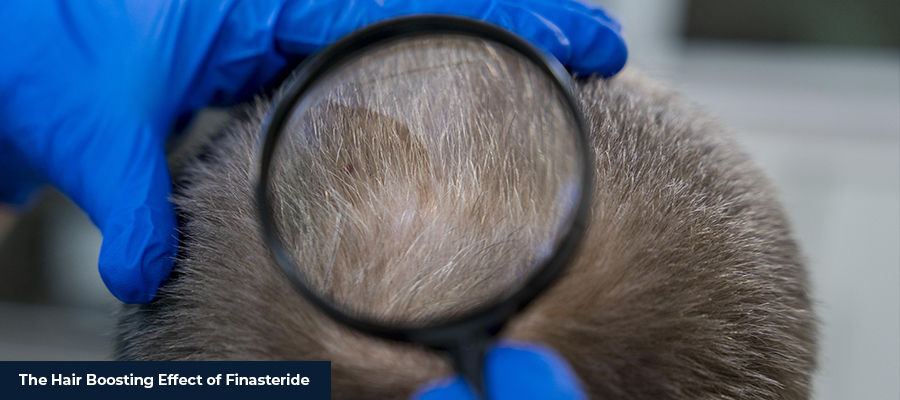The Hair Boosting Effect of Finasteride

Publish Date: 1 June 2023
Finasteride for Hair Loss After Hair Transplantation
Hair transplant surgery is the most popular and effective solution for individuals seeking to restore their hairline and combat baldness. While the transplantation procedure itself can provide significant improvements, the use of adjunctive treatments, such as finasteride, can further enhance the overall outcomes.
This article explores the hair-boosting effect of finasteride after hair transplant, highlighting its benefits and considerations for post-operative patients.
- Mechanism of Action: Finasteride is a medication that works by inhibiting the enzyme five alpha-reductase, which converts testosterone into dihydrotestosterone (DHT). DHT is known to contribute to hair loss in individuals with androgenetic alopecia (pattern baldness). By reducing DHT levels, finasteride helps to slow down hair loss and promote hair regrowth in affected areas.
- Improved Hair Survival: After a hair transplant procedure, the transplanted hair follicles need time to establish themselves in the new location. Finasteride can aid in this process by reducing the effects of DHT on the transplanted hair follicles. By inhibiting DHT, finasteride helps to improve the survival rate of transplanted hair and minimizes the risk of future hair loss.
- Enhanced Hair Density: Besides promoting hair survival, finasteride can also increase hair density after a hair transplant. Finasteride allows the transplanted hairs to maintain their thickness and overall appearance by preventing the miniaturization of hair follicles. Finasteride can lead to a head of hair that looks fuller and more natural.
- Long-term Maintenance: Finasteride is not a temporary solution but a long-term treatment for androgenetic alopecia. After a hair transplant, using finasteride as part of a comprehensive hair loss prevention strategy can help maintain the results achieved through the transplantation procedure. It is important to note that individual responses to finasteride may vary, and consulting with a healthcare professional is recommended to determine the appropriate dosage and duration of use.
What is Finasteride Used for?
Finasteride can provide a significant hair-boosting effect after hair transplant surgery. Finasteride helps improve hair survival, enhance density, and maintain long-term results by inhibiting the conversion of testosterone into DHT.
However, it is crucial to weigh the potential benefits against the possible side effects and consult a healthcare professional to determine the most appropriate course of action. With careful consideration and guidance, finasteride can be a valuable tool in maximizing the success of a hair transplant and achieving desired hair restoration outcomes.
Understanding Finasteride Side Effects
Finasteride is a medication that has been widely used to treat male pattern baldness and benign prostatic hyperplasia (BPH), a non-cancerous enlargement of the prostate gland. While finasteride has shown significant effectiveness in treating these conditions, it is important to be aware of potential side effects associated with its use. This article aims to provide an overview of the known side effects of finasteride, its prevalence, and considerations for users.
Sexual Side Effects
One of finasteride’s most commonly reported side effects is sexual dysfunction. Some individuals may experience a decrease in libido (sex drive), erectile dysfunction, reduced semen volume, or difficulty achieving orgasm. Finasteride side effects are rare and tend to resolve after discontinuing the medication. However, in some cases, they may persist even after stopping finasteride.
Depression and Mood Changes
There have been reports of finasteride use being associated with mood changes, including depression and anxiety. While the exact mechanisms behind these effects are not fully understood, it is crucial to be aware of any changes in mood while taking the medication. If significant mood changes occur, it is advised to consult a healthcare professional for further evaluation.
Breast Tenderness and Enlargement
A small percentage of individuals taking finasteride may experience breast tenderness or enlargement. This condition, known as gynecomastia, results from hormonal changes caused by the medication. In most cases, this side effect is temporary and subsides after discontinuing finasteride.
Allergic Reactions
Although rare, some individuals may experience allergic reactions to finasteride. Symptoms may include rash, itching, swelling of the face or throat, and difficulty breathing. If any signs of an allergic reaction occur, immediate medical attention should be sought.
Other Finasteride Side Effects
In addition to the aforementioned finasteride side effects, there have been isolated reports of other potential adverse effects associated with finasteride use. These include changes in liver function, dizziness, headaches, and gastrointestinal disturbances. While these side effects are less common, it is essential to be aware of them and consult a healthcare professional if they occur.
Finasteride is a medication that can be effective in treating male pattern baldness and benign prostatic hyperplasia. However, it is crucial to understand and acknowledge the potential side effects that may accompany its use. While most side effects are rare and tend to resolve after discontinuing the medication, it is important to monitor and report any adverse reactions to a healthcare professional.
Remember, individual responses to medications can vary, and a thorough discussion with a medical professional is advised before starting or discontinuing any medication.

Instagram: smilehairclinic
Last Update: 6 June 2023
 Whatsapp
Whatsapp
